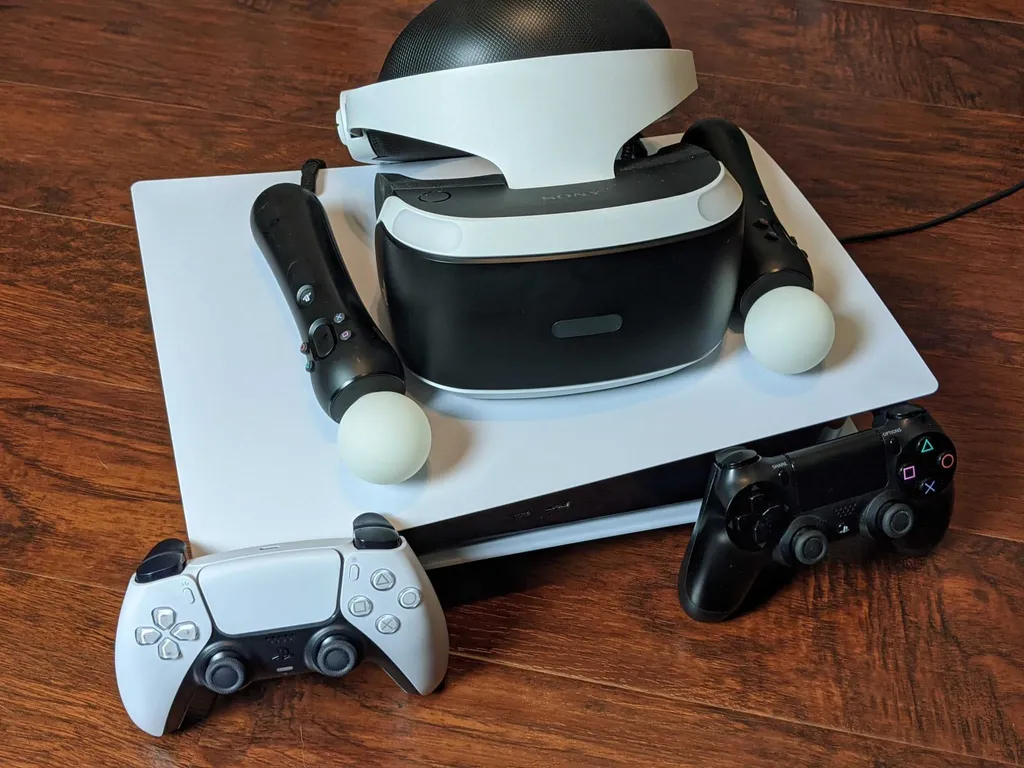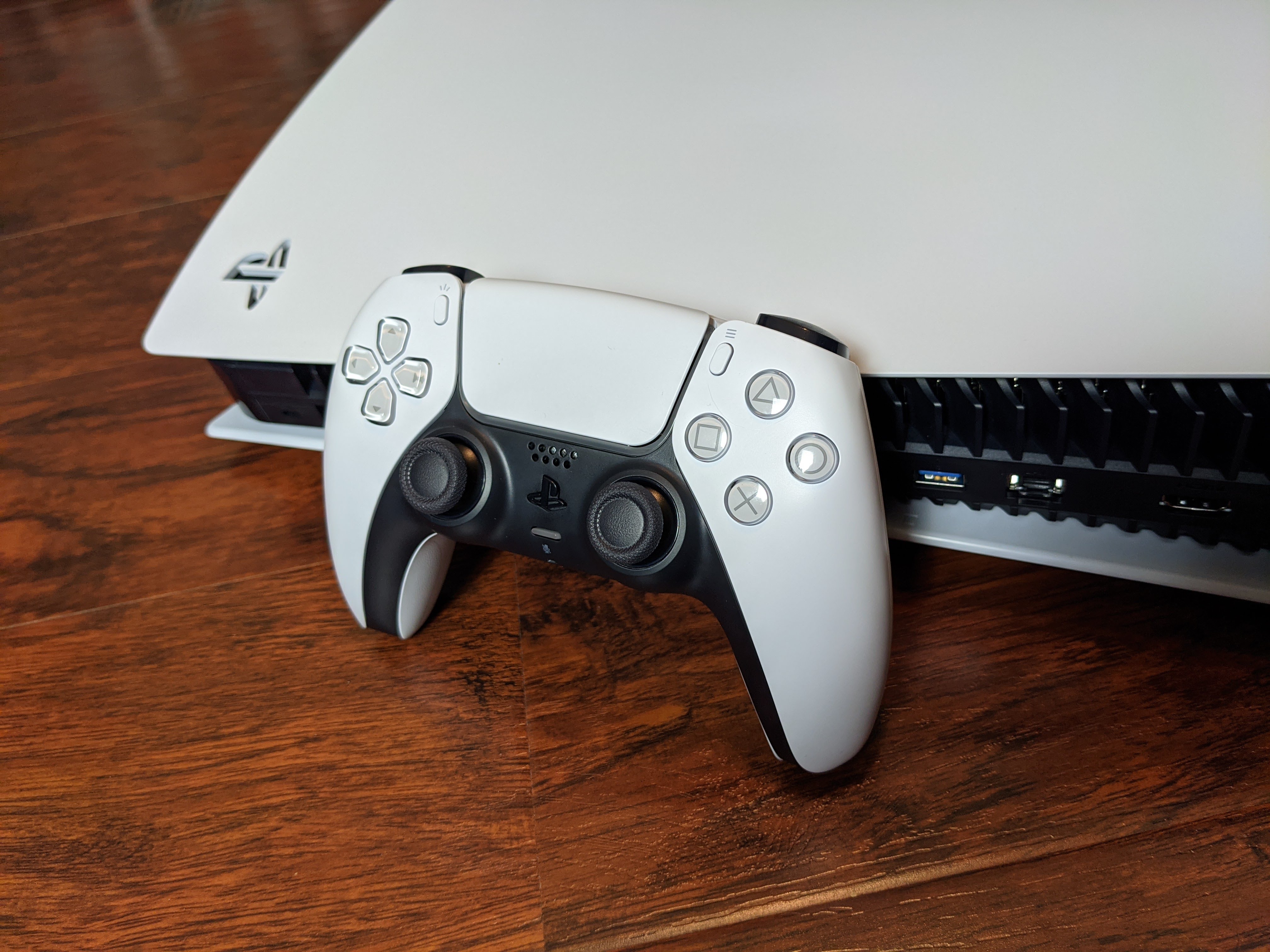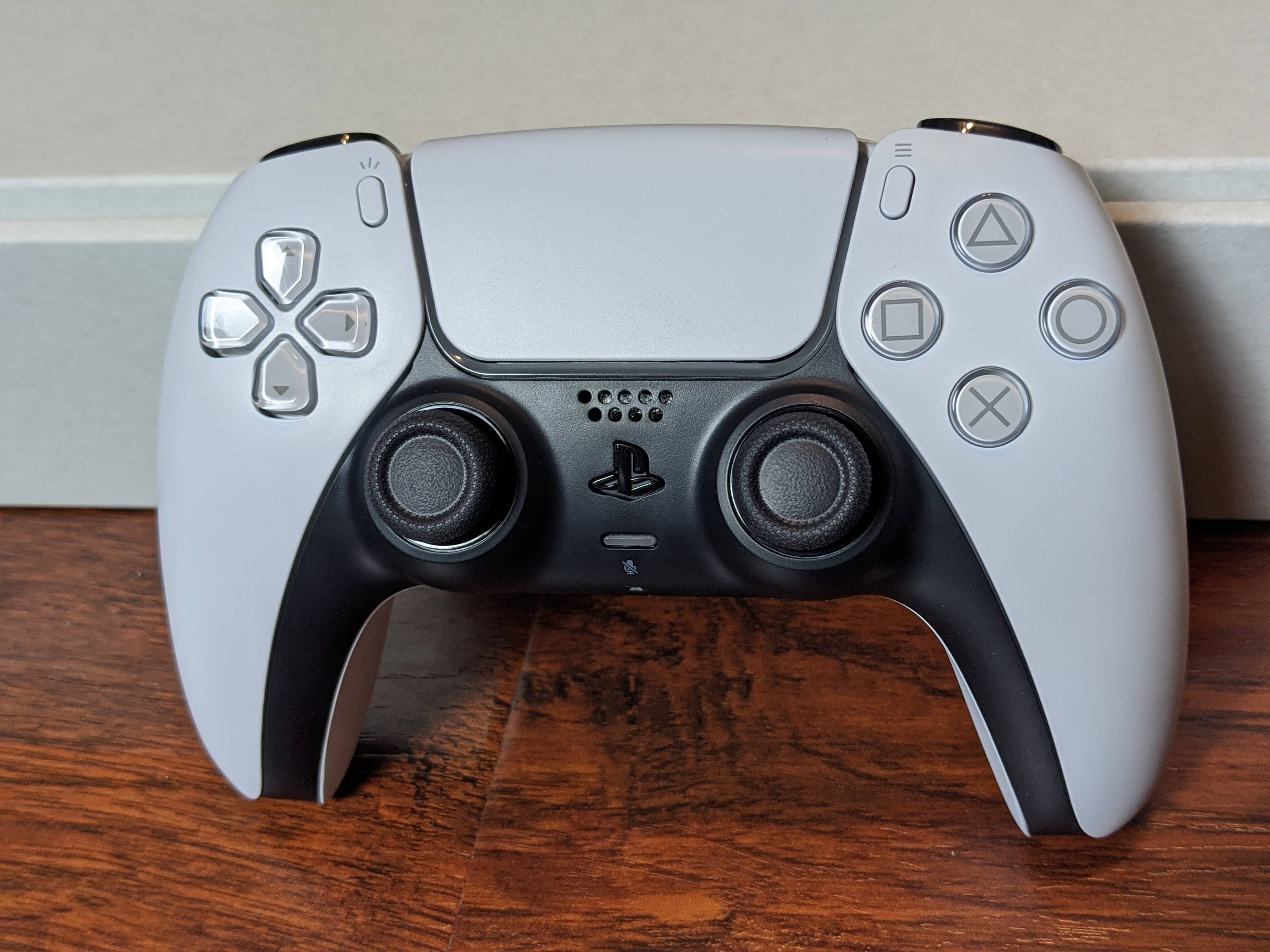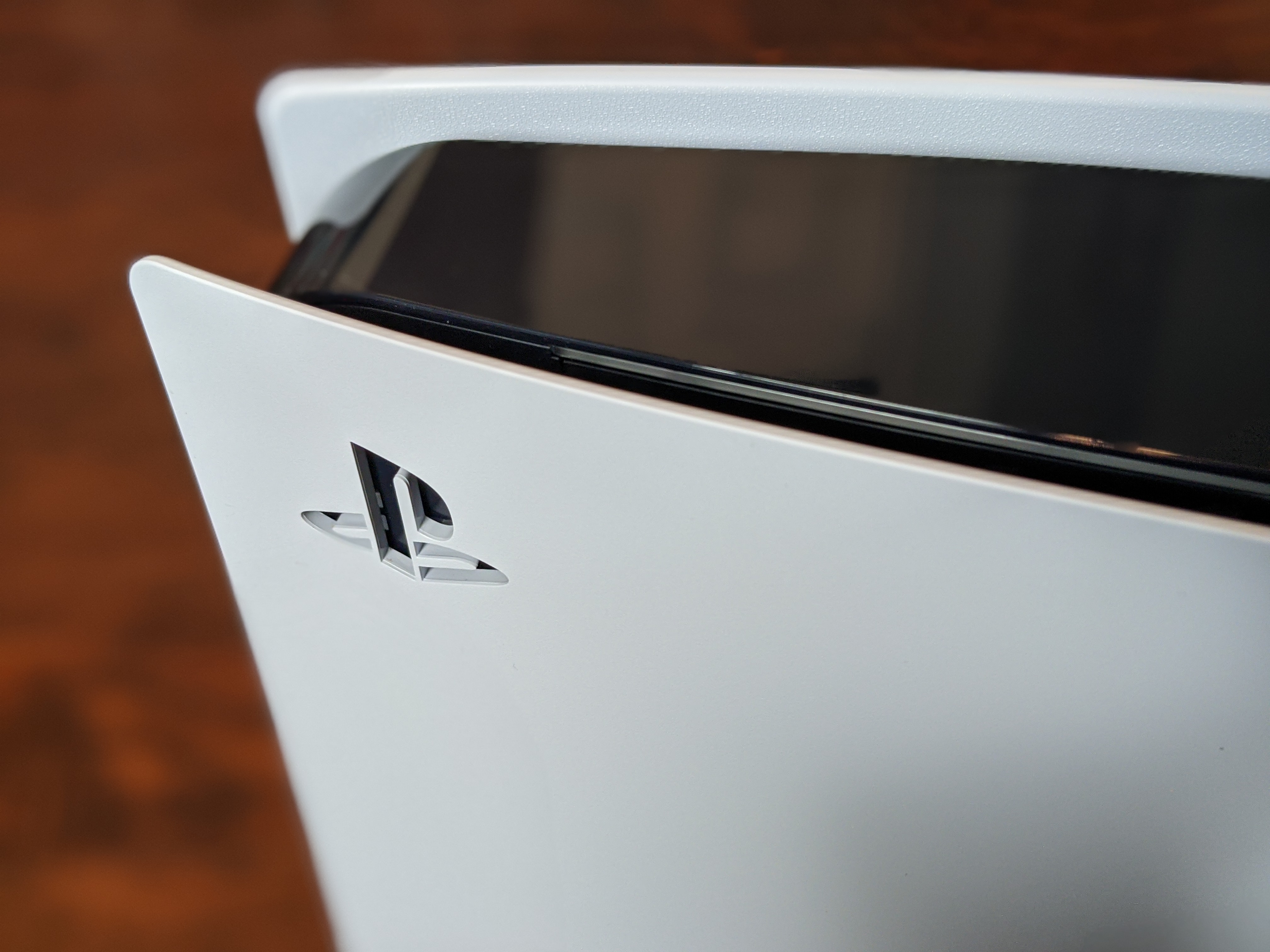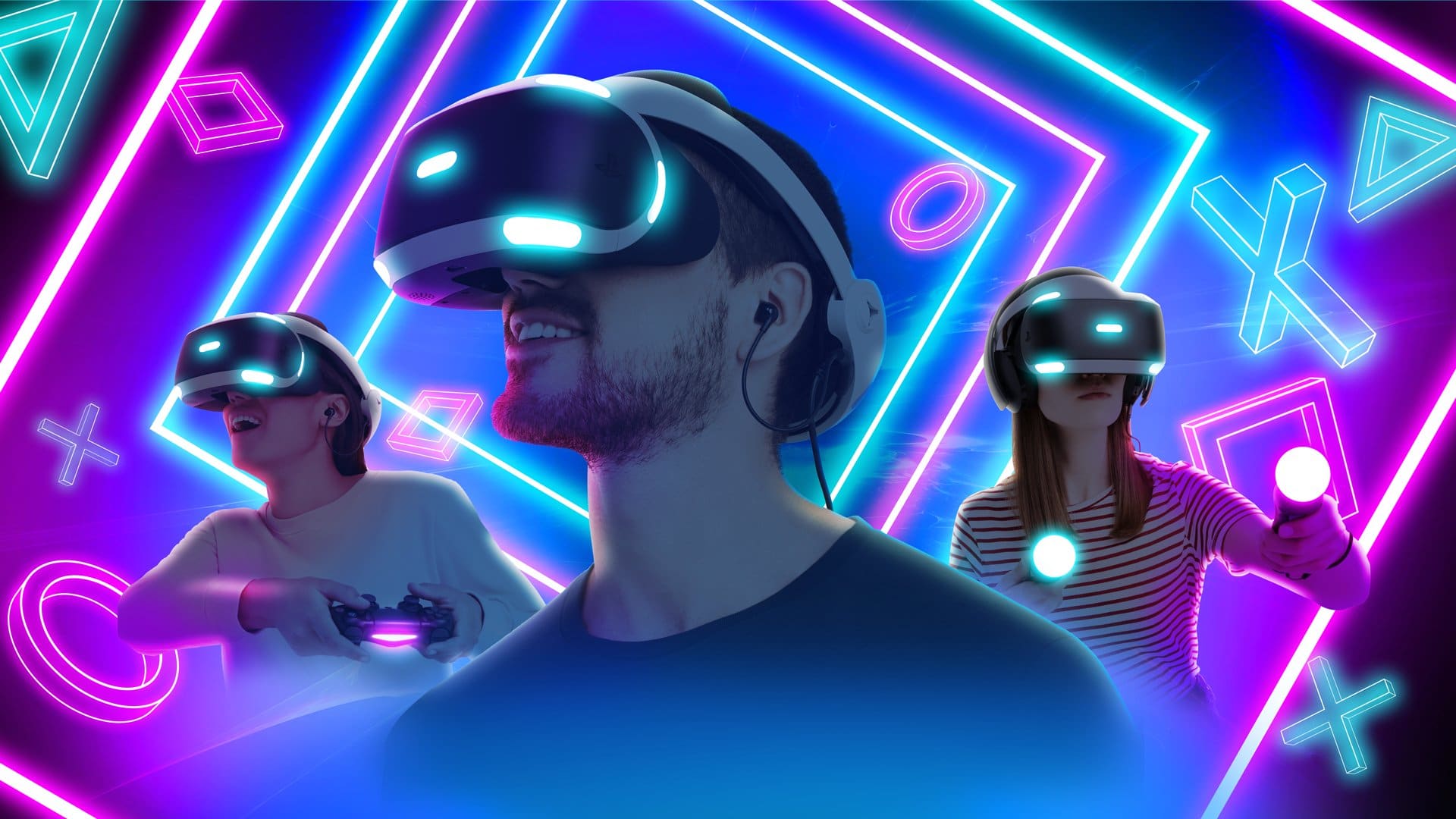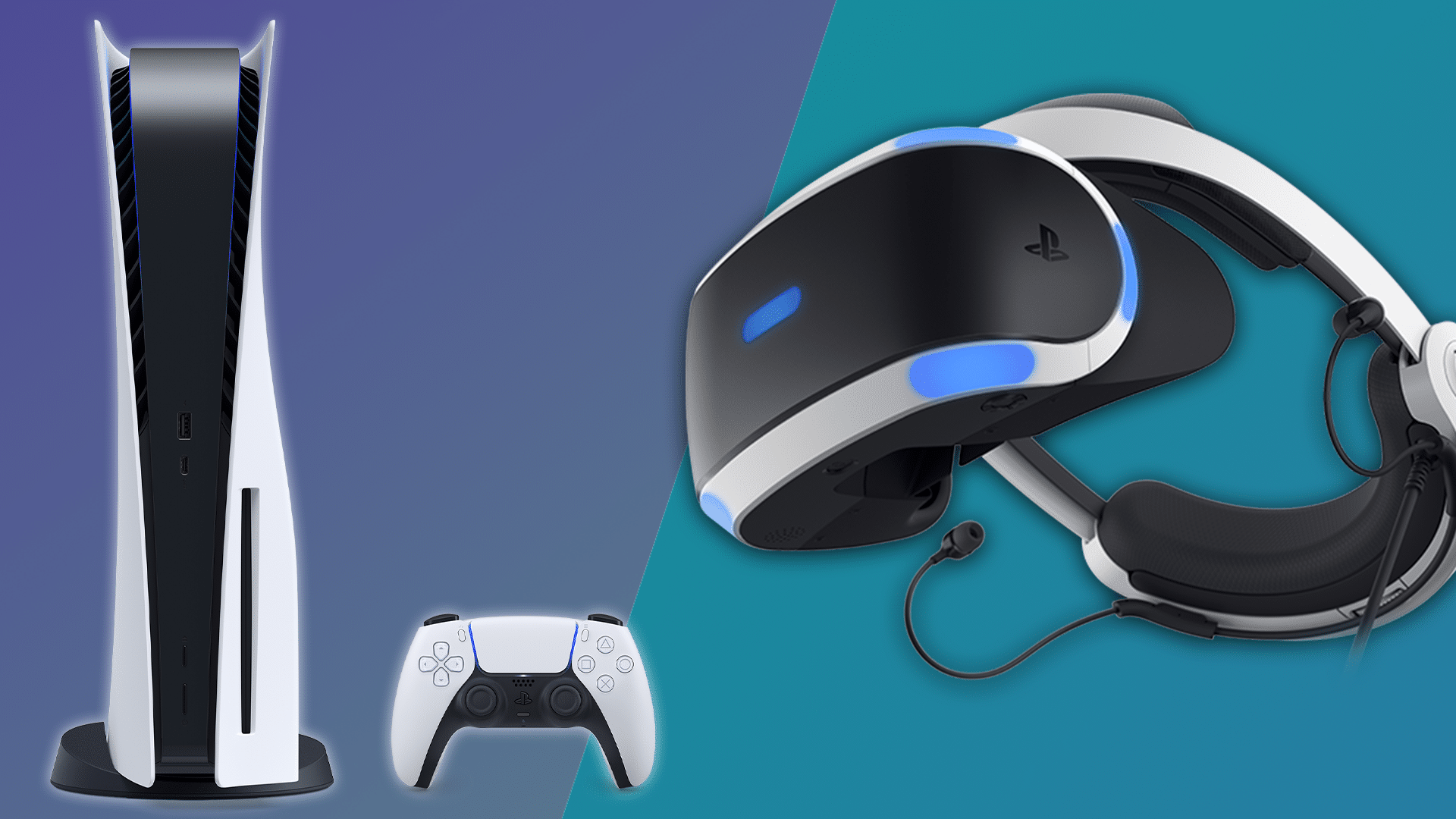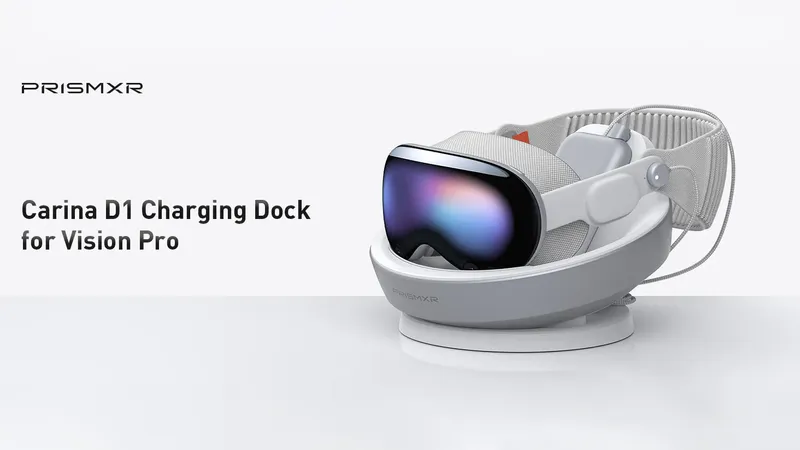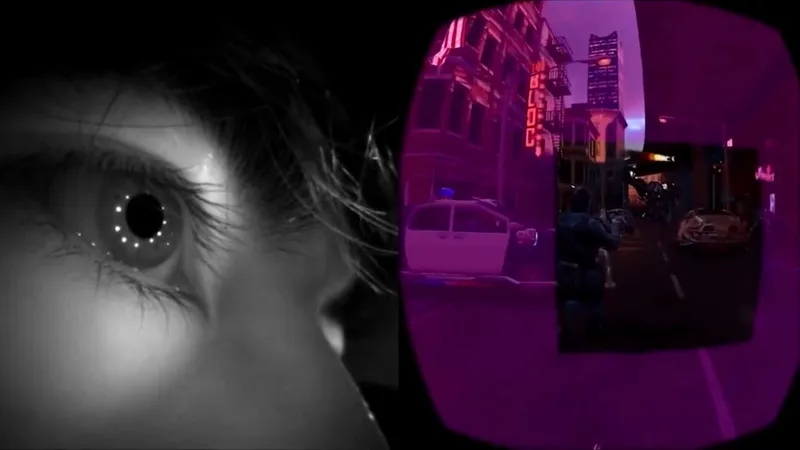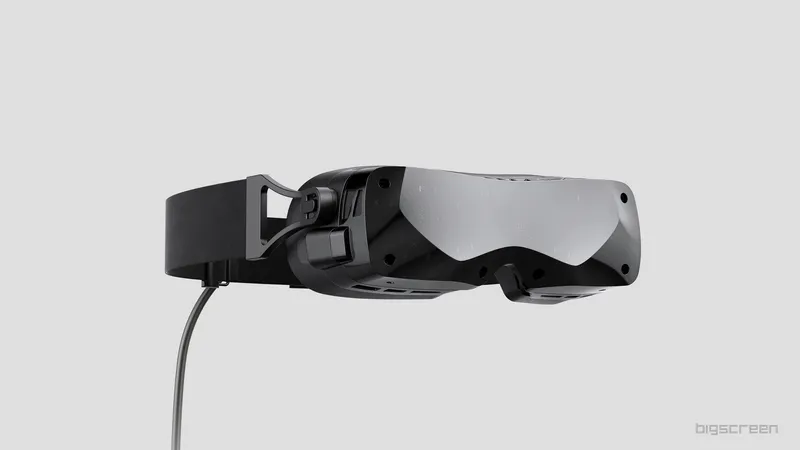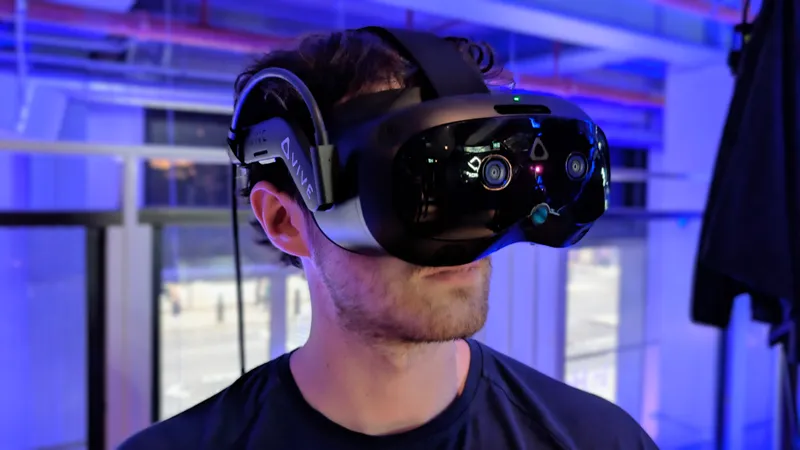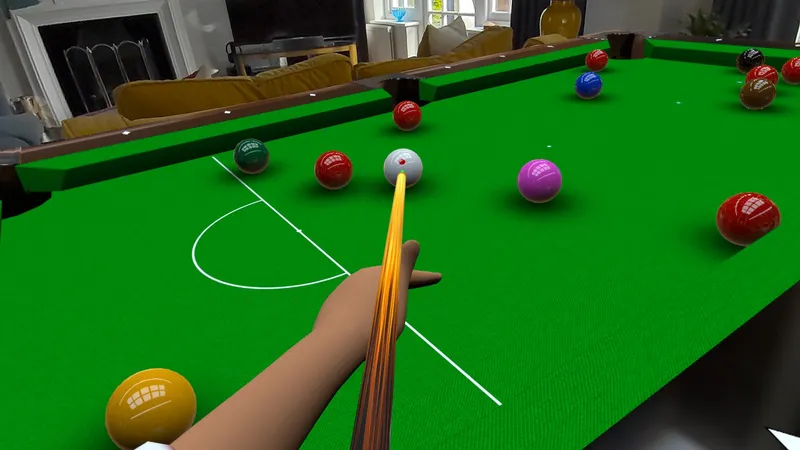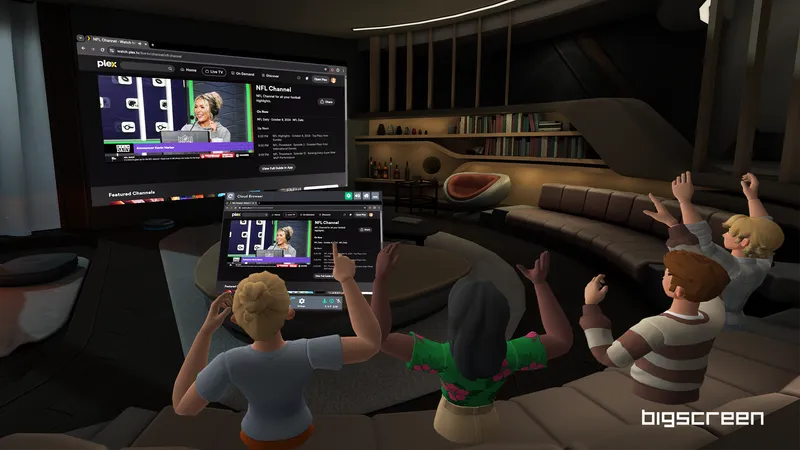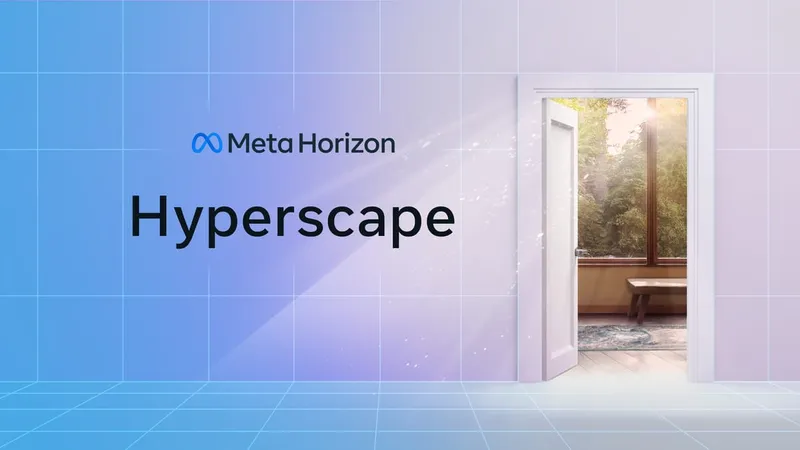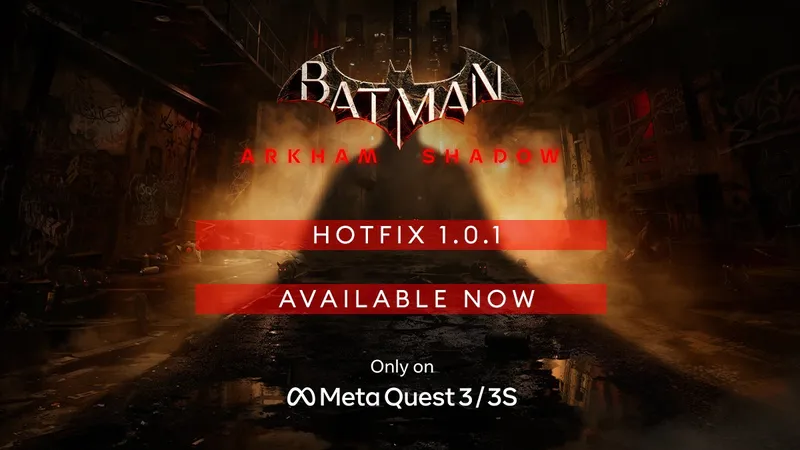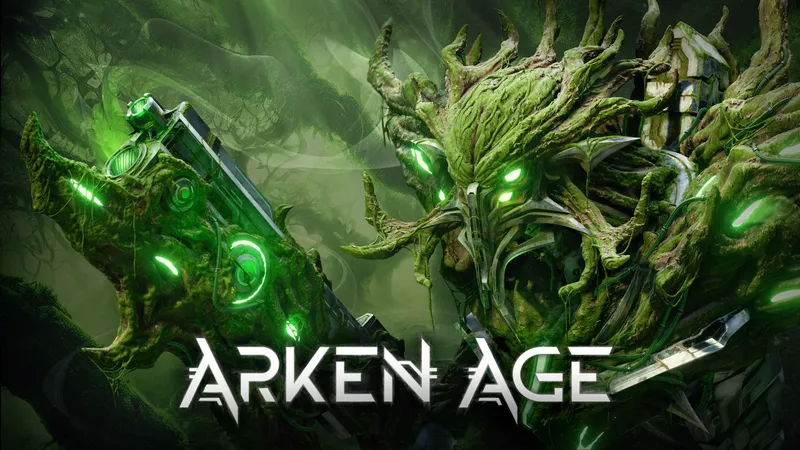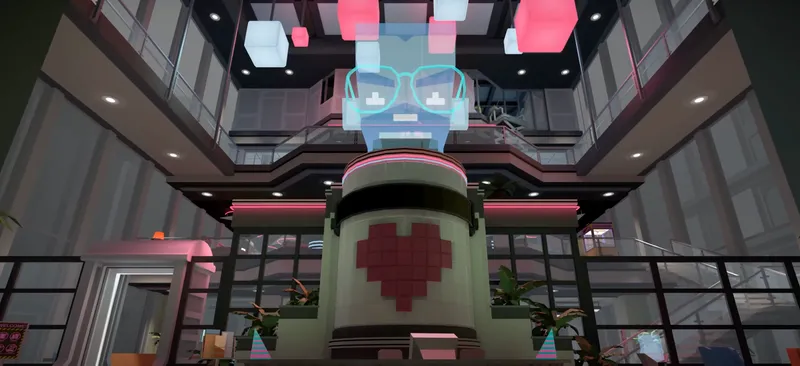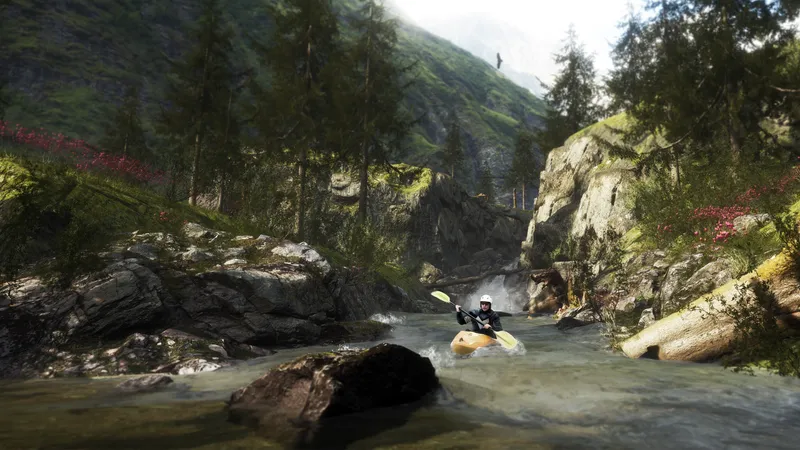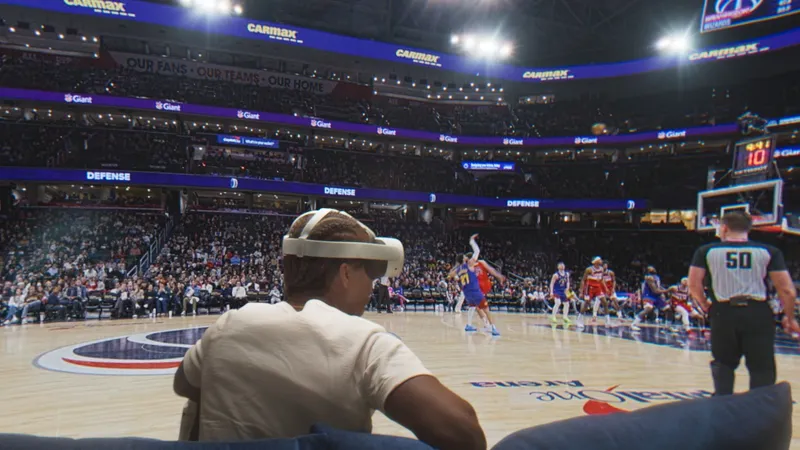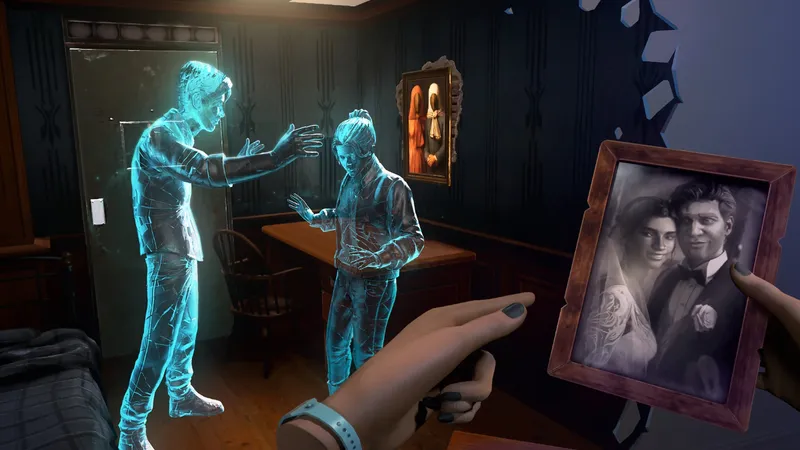Next-gen gaming is here, but is it worth it for VR enthusiasts? Our PS5 VR review tells all.
The PlayStation 5 is an incredibly impressive piece of video game hardware that is absolutely worth a purchase if you want to play the latest, most cutting-edge video games at the highest performance and fidelity possible on your 4K TV. But it’s definitely not worth it as a VR-focused console. At least, not yet.
PlayStation 5: Design, Specs, And Setup
Before we get into the nitty gritty, let’s cover the design, specs, and setup for the console.
At first glance, you either love or hate the PS5. There doesn’t seem to be a whole lot of middle ground, but your mind might change. At first, I wasn’t a big fan of it, but after two weeks with the system it’s starting to grow on me. It’s nice seeing a console that doesn’t just blend into the background as another black rectangle. While still obnoxious to look at, sticking out isn’t necessarily a bad thing. Regardless, it matches the PSVR headset very well stylistically which is pretty neat.
Also, it’s extremely heavy. Please use the included stand even if you intend to display it vertically. It’s all but required horizontally since the curved faceplates prevent it from lying flat on either side without the stand.
The back has two USB ports, an HDMI port, a power cord connection, and Ethernet port. That’s it! No PS Camera port at all, instead you’ll have to get this special adaptor, which converts the PS Camera into a USB device. That means you’ll need to take up two USB ports just to use your PSVR headset.
The front of the console has a USB port, USB-C port, eject button, and power button. I’ve used the USB-C port for charging the controller and also for the dongle that goes with my wireless SteelSeries Arctis 1 headset — which is confirmed to work with the new Tempest 3D Audio technology. We only have our hands on the actual disc version of the PS5, not the digital edition without a disc drive so we’re not sure what they did with the spot where the eject button is on that one.
When the PS5 specs were revealed back in June of this year, it was exciting for the VR market because it was a mainstream gaming console with “modern PC power” that could possibly result in really impressive VR visuals.
Here’s the chart we published at that time:
| PlayStation 4 | PlayStation 4 Pro | PlayStation 5 | |
|---|---|---|---|
| GPU: | 1.8 TFLOPS (18x GCN2 CUs @ 0.8GHz) | 4.2 TFLOPS (36x GCN2 CUs @ 0.9 GHz) | 10.3 TFLOPS (36x RDNA2 CUs @ max 2.2GHz) |
| CPU: | 28nm 8-core @ 1.6GHz | 16nm 8-core @ 2.1GHz | 7nm 8-core @3.5GHz |
| RAM: | 8GB (176GB/s) | 8GB (218 GB/s) | 16GB (448 GB/s) |
| Storage: | 500GB 5400RPM HDD (0.1 GB/s) | 1TB 5400RPM HDD (0.1 GB/s) | 825GB PCIe 4.0 SSD (8-9 GB/s) |
Luckily setup is just like it was on PS4, except you’ll now use the PS Camera adapter instead of plugging it into the PS5 directly.
Buried in the Settings menus though, now there are some extra calibration settings. There is a feature that helps you measure your IPD to tweak the headset, you can recalibrate your headset or PS Move tracking as well.
[vc_row][vc_column][vc_cta h2=””]PS5 VR Review: Is It Worth It As A General Gaming Console?
When paired with a capable 4K resolution television that supports HDR color output and high refresh rates up to 120Hz, PS5 is absolutely magical. Ray tracing is a sight to behold. Games load lightning fast to the point of barely even perceiving they’re loading at all. Playing a game that’s buttery smooth at 60FPS and 4K resolution feels like a truly next-generation advancement, even compared to the PS4 Pro at times.
During the review period I’ve been able to play PS5-native versions of games like Spider-Man Miles Morales, Astro’s Playroom, Devil May Cry 5 Special Edition, Bugsnax, and The Pathless, as well as my entire library of backward compatible PS4 and PSVR games. It’s honestly the most fun I’ve had playing non-VR games in a long while, everything is just so snappy and smooth.
I was particularly impressed with ray tracing features as I didn’t expect to care about it very much. But swinging by buildings in Spider-Man Miles Morales was a jaw dropping experience as the entire city reflected back on the windows of skyscrapers and the puddles of water reflected gorgeous particle effects creating a cascade of light and colors during intense action segments in Devil May Cry.
I’ve got a VR-capable gaming PC with an RTX 2060 Super, but honestly, the PS5 feels more powerful. At the very least it’s nice having something this impressive that’s finely tuned and optimized for every single game it plays.
While I haven’t gotten to try out the PS5 versions of games like Assassin’s Creed Valhalla, Watch Dogs: Legion, Demon’s Souls, Godfall, or the other graphical powerhouse titles, I’m pretty confident they’re going to look amazing as well.[/vc_cta][/vc_column][/vc_row][vc_row][vc_column][vc_column_text]
DualSense Controller
I’ve already written an entire editorial about how much I love the DualSense PS5 Controller. The haptic feedback is insanely precise and impactful and the adaptive triggers are already game-changers. I can’t wait to see how they’re used in future titles, such as Horizon Forbidden West. It’s going to feel amazing firing Aloy’s bow with this thing — or better yet, imagine shooting an arrow in the next Elder Scrolls VR game!
After the last 2+ weeks with it and the PS5 I’m confident in saying it’s the best controller I’ve ever used. I wasn’t a big fan of the PS4 controller to be honest, it always felt a bit off for some reason. PS1-PS3 have never been particularly amazing, I just got used to the format. Other recent controllers like the Xbox One gamepad and Switch Pro controllers are great as well, but nothing beats the DualSense for me now, even outside of the triggers and haptics.
The textured grip feels great on your fingers and ever-so-slight angling of the d-pad and face buttons makes it supremely comfortable to rest your thumbs. The analog sticks are textured now as well instead of the smooth craters of the PS4’s DualShock 4. Buttons are nice and clicky without feeling too hard and everything is just so nice to grasp. I could go on and on about this thing.
For VR it has some really dramatic future implications, assuming Sony decides to capitalize on the potential here. One of the biggest bottlenecks with current VR motion controllers is haptics. We’ve got the Index Knuckles Controllers over on SteamVR for PC that have finger tracking and allow for grabbing/dropping/throwing sensations, but haptics / vibrations hasn’t advanced in controller technology for quite some time until now.
Using the haptic feedback and adaptive triggers found in the DualSense and then applying that same technology into new VR motion controllers could immediately give Sony a huge advantage over the competition. I’d take VR motion controllers with analog sticks and DualSense-quality triggers and haptics over anything else out there, period.
I can imagine a multitude of ways the technology could enhance VR from fine-tuning where the feedback is felt on a sword when hitting something, subtle micro-vibrations to simulate different types of textures and impacts, and the jolt of various powers and abilities in more fantastical games. It’s so appealing to think about Sony would be insane not to utilize it fully in their next VR device.
Honestly the only area for concern is the battery life. Due to all of these new features, it seems like the battery has definitely suffered. I haven’t been able to accurately time it yet, but after a full day of gaming I typically notice it’s down to its last bar in the PS5 UI. It doesn’t take long to charge back up, it’s a USB-C charging port now, but it doesn’t last very long seemingly. That being said, you can turn down or turn off all of these new features and tweak lots of settings that will likely help the battery last longer if you’d like.
Is PS5 Worth It For VR?
As impressive as the PS5 is from a traditional gaming perspective, I really wish I could say the same for its VR support. To be frank, I was flat out disappointed.
Yes, every PSVR game I tried on PS5 did work (excluding Robinson: The Journey and DWVR, although the latter is getting patched to work) so there’s that. The camera adapter is a simple USB converter that plugs into one of the three USB ports on the console and you can pair a PS4 controller if you need the lightbar tracking or just use a DualSense for gamepad only games like Resident Evil 7. PS Move and PS Aim also pair fine, you just sync them up via USB just like on PS4.
Behold! The PS5 <-> PS4 Camera adapter for PSVR
It's real! I have one! Better photos coming later 👀 pic.twitter.com/Kc4B6FCEVR
— David Jagneaux ➡️ GDC (@David_Jagneaux) October 30, 2020
[vc_row][vc_column][vc_cta h2=””]PS5 VR Review: Loading Times Compared (Updated)
So far I’ve personally tested and compared side-by-side on PS5 vs PS4 Pro the following PSVR games. I’ve included average load times on PS4 Pro versus PS5 using PSVR for each as well.
Astro Bot: Rescue Mission [Review]
Loading time was measured from the moment the level was selected until the blue wireframe outline appears.
PS5 Level 1-1 Load Time: 9:06 seconds
PS4 Pro Level 1-1 Load Time: 9:58 seconds
Blood & Truth [Review]
Loading time was measured from the moment you ‘Confirm’ your selections after picking ‘New Game’ until the interrogation room fades into view.
PS5 New Game Load Time: 4:30 seconds
PS4 Pro New Game Load Time: 8:17 seconds
The Elder Scrolls V: Skyrim VR [Review]
Loading time was measured from the moment you confirm ‘Yes’ to start a New Game until the words ‘Bethesda Game Studios’ appears on a black background.
PS5 New Game Load Time: 9:30 seconds
PS4 Pro New Game Load Time: 22:58 seconds
Loading time was measured from the moment you confirm ‘Start Game’ after selecting your difficulty for a new game until the floating cube has a triangle to click and begin the mission. We didn’t measure up until the game is visible since VO without visuals plays beforehand.
PS5 New Game Load Time: 20:13 seconds
PS4 Pro New Game Load Time: 54:30 seconds
Resident Evil 7 [Review]
Loading time was measured from the moment you confirm ‘Yes’ when asked to ‘Load most recent save data?’ at the main menu until the prompt to press ‘X’ to continue appears in the lower right corner.
PS5 Continue Game Load Time: 15:26 seconds
PS4 Pro Continue Game Load Time: 22:20 seconds
WipEout Omega Collection [Review]
Loading time was measured from the moment you confirm your vehicle selection to begin a race until the game fades into view.
PS5 Start Race Load Time: 13:25 seconds
PS4 Pro Start Race Load Time: 18:26 seconds
[/vc_cta][/vc_column]
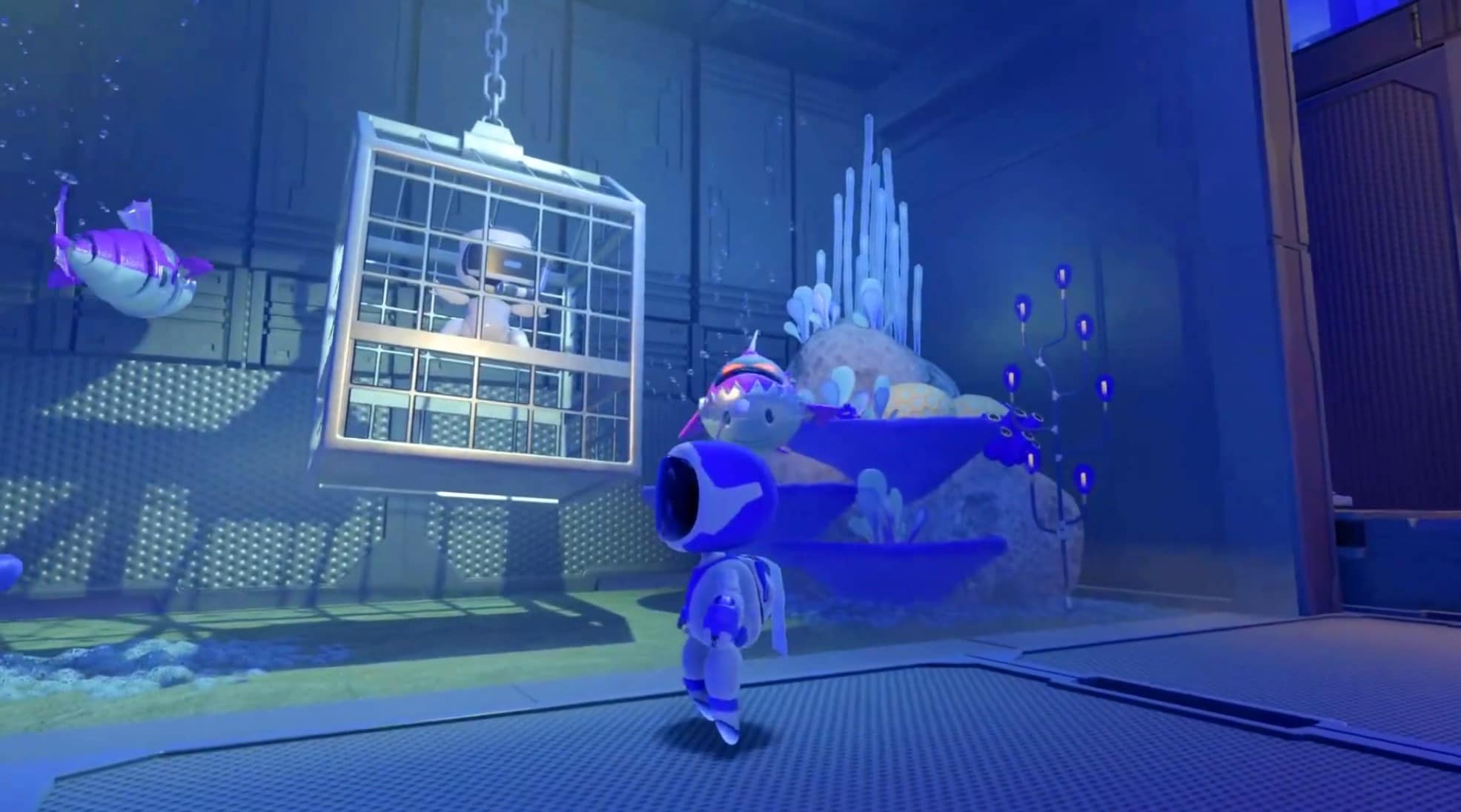
From a baseline, “Does it work?” perspective, yes, it works. But that’s not enough to persuade the millions of PS4 owners and PSVR users that already have VR-capable consoles to upgrade from a PS4 or PS4 Pro. After hours of testing and comparing games I can say with quite a lot of confidence that any minor graphical improvements were negligible at best and unnoticeable otherwise.
I will say that things seemed to be a tiny bit smoother, but it doesn’t seem like an increased framerate as far as I can tell. Anecdotally, it seems like the frame pacing might be just slightly improved.
Or in other words, I didn’t see anything that makes me feel like I was playing PSVR games on a new console at all. The in-headset view and TV screen output both look the same to me.
Even after setting up my PS4 Pro with one PSVR and my PS5 with my second PSVR, literally side-by-side in my office, switching back and forth in real-time, I did not personally notice a meaningful difference between the headsets.
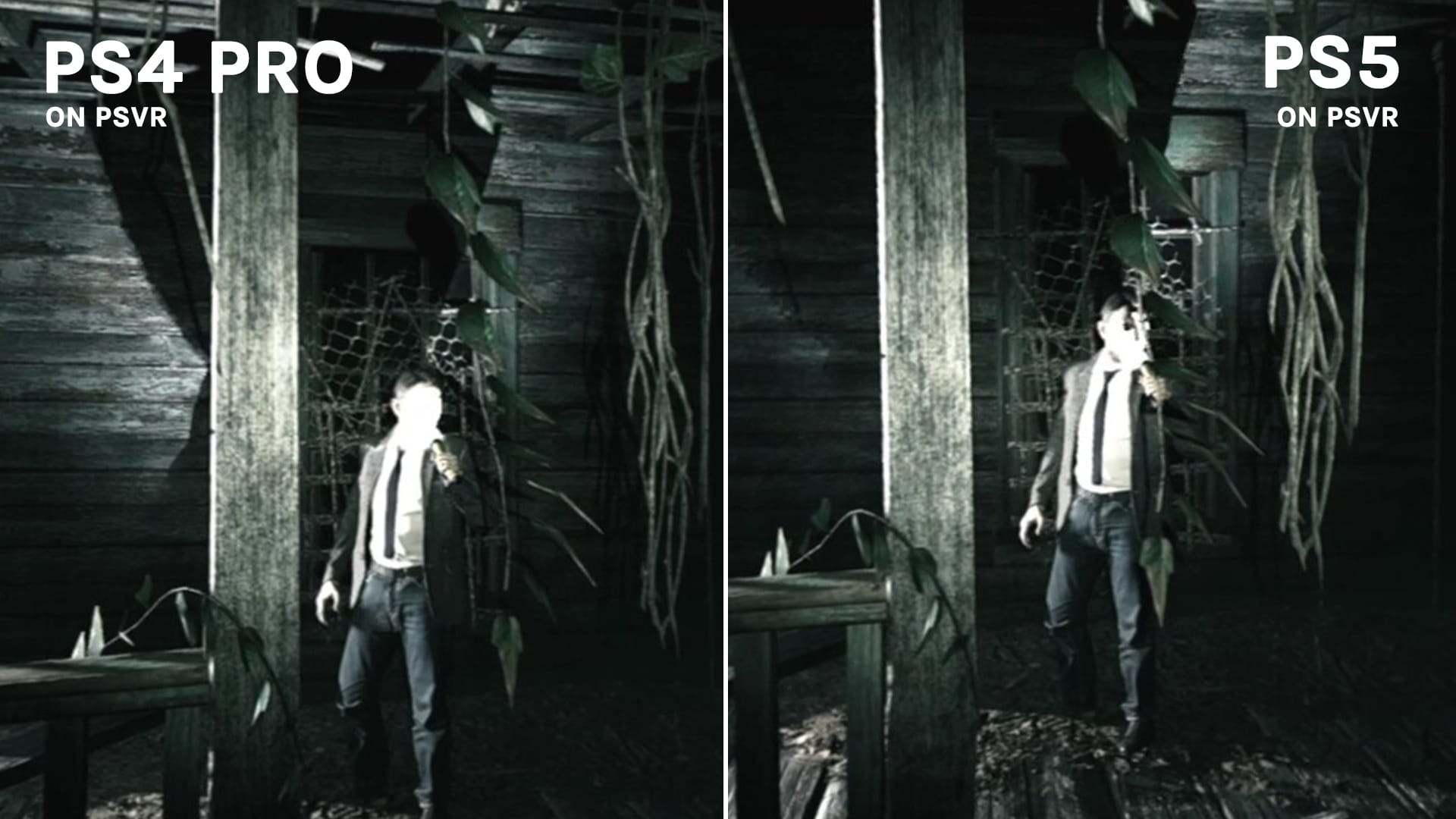
The only difference I’ve noticed are that PSVR has more detailed and helpful adjustments and settings menus on PS5, which makes setup and tweaking it much easier. When you press the PS home button it pulls up a new quick menu along the bottom of the screen for quick setting access, but if you dig into the higher level settings, under Accessories, and PlayStation VR, you’ll find all of your options.
Calibrating the light balls on the PS Move Controllers and PS Aim Controller is easier than ever, as is calibrating the PSVR headset itself, and there is a feature to help you precisely measure the distance between your pupils, or your IPD, which is important to set for proper 3D rendering. The measurement tool works like it did back on PS4.
The only difference I really notice though in terms of playing PSVR content is that loading times are a bit better. Just a bit though, not enough to be a huge selling point for VR games. PS5 native games though, those load times are incredible.
For example, Spider-Man: Miles Morales has virtually zero loading times. From the moment I press ‘Continue’ in the main menu the screens dims down to black and then it’s back a second later in-game. That same game on PS4 takes around 10-seconds to load into a game, sometimes more, plus fast travel and between mission loading. PS4 native games don’t have the same difference in loading time improvements.
To be clear: I did experience better load times on PS5 with PSVR games, but not enough of an improvement that it felt particularly significant. Iron Man VR for example can still take a really, really long time. The main game I used for testing was Resident Evil 7 since it’s included in the PS+ Collection and is free for all PS5 owners that have PlayStation Plus. It’s also one of the very best PSVR exclusives and still the best VR horror game I’ve played to date, so it seemed like a good one for comparison.
You can see a full breakdown of the loading measurements I got from PS5 vs PS4 Pro a few paragraphs above.
If you bought a PS4 Pro for the upgrade in VR performance, I totally understand that. It definitely enhances the visuals, many games have been patched with specific PS4 Pro improvements, and overall it’s a better experience if you’re willing to upgrade for that bump in quality. It doesn’t seem like PS5 will have similar improvements over PS4 Pro, at least not in the short term.
I’ve reached out to Sony multiple times to ask about the reported ‘Game Boost’ feature that presumably enhances “select” PS4 titles. As far as I can tell, no PSVR games are “boosted” unless I’ve missed something.
According to the PS Blog, this is what Game Boost is marketed as:
“PS4 titles get even better on PS5. Select PS4 titles will see increased loading speeds on the PS5 console, and will also leverage Game Boost, offering improved or more stable frame rates. Some titles with unlocked frame rates or dynamic resolution up to 4K may see higher fidelity. Additionally, PS4 games will also take advantage of some of PS5’s new UX features.”
A Sony spokesperson told me they do not have a list of Game Boost titles, so my assumption is that no PSVR titles specifically take advantage of the increased power of the PS5 from what I’ve seen. I can only find a reference to a handful of PS4 titles actually getting upgraded without requiring new PS5 native releases: Ghost of Tsushima, God of War, and Days Gone. None of those have any PSVR support. Then again, Sony set strict framerate limits for PSVR games last generation, so it may not be easy to push VR games beyond that.
Based on what I’ve seen it appears that PS4 games on PS5 are displayed basically just like they are on PS4 Pro. As a result, PSVR games are displayed the same way. Since the PSVR is categorized as a backwards compatible device (with no PS5 games planned to support it, reportedly) they just aren’t taking advantage of that increased horsepower.
Maybe that will change eventually and maybe Sony will patch in the ability for PSVR games to get some enhancements. I wouldn’t recommend based a purchasing decision off of a theoretical maybe though.
By contrast, backwards compatibility on the Xbox Series X seems to be leaps and bounds more robust. Not only do all Xbox One games, a large chunk of Xbox 360 games, and many of the best original Xbox games all work natively, they receive boosts to performance and fidelity as well. Granted, Xbox has zero VR support and that doesn’t appear to be changing anytime soon.
[vc_row][vc_column][vc_cta h2=””]PS5 VR Review: User Interface And Everything Else
Sony hasn’t made a whole lot of changes to its UI designs since the PlayStation 3. Everything since then, including the PSP, PS Vita, and PS4 have all used very similar XMB (Cross Media Bar) interfaces that utilize horizontal organization. You scroll from left to right to find top-level things like Settings, Games, Videos, etc, and then scroll up or down within those folders to find what you’re looking for.
They’ve finally changed it for PS5.
The main menu is split into Games and Media. Everything else is found either in the Control Center (accessed by tapping the PS logo button) or somewhere on the top level interface. For example, all settings are found in the top right corner of the Home screen, at the gear icon. Profile settings are right next to that.
PlayStation 5 now also has a global search function. You can type in the name of any game and it will search not only the PS Store, but your library as well to pull up relevant results. Thankfully, just like everything else the PS5 does, this search bar is blisteringly fast.
After so many years of watching loading icons spin while trying to open the PS Store on PS3, Vita, and PS4, the PS5’s snappy responsiveness is just incredible. When you put the cursor over the PS Store and press down to explore things it just opens immediately. The same goes for PS Now — other than waiting on the servers to load up whatever game you’re streaming, it’s all basically instantaneous.
It’s very difficult to overstate how much of a difference that lightning-quick SSD makes from an overall quality of life and user experience perspective. There may not be a ton of enhancements for PSVR games on PS5, but it certainly feels like an extremely powerful and fast console the likes of which I’ve never experienced.[/vc_cta][/vc_column]
The Future of PSVR and Sony’s VR Plan
The future of PSVR has never been less clear than it is right now. Last month it seemed like Sony was simply waiting for the right time to announce the next PSVR headset, but now the water is very murky.
The biggest disappointment here is that the market seems perfectly primed for a new PSVR headset to really hit the ground running, even if it’s over a year away. The Oculus Quest 2 is selling well and expanding access and interest to VR and Sony is coming off a huge generation with the PS4 exploding in market share compared to Xbox. PSVR had success and found its way into millions of homes thanks to superb software even though the underlying technology was aging and lackluster.
According to talks from the R&D department and patents we’ve seen over the years, all signs point to the next PSVR potentially being really impressive. There are clues that it could have impressive new controllers, sharper resolutions, and potentially even a wireless connection to the PS5 itself. That would be extremely exciting.
As it stands though, the only certainty is that PlayStation leadership isn’t sold on the promise of VR (yet) and there are no concrete plans for a new VR device on the roadmap. Personally, I’m expecting it to happen still, probably in late 2022, but that’s purely conjecture.
PS5 VR Review Final Verdict
At the end of the day, the PlayStation 5 is not a console designed with VR as its focus at all. Thankfully your existing PSVR works with it thanks to a requisite adapter and there is a great back-catalog of existing PS4 VR games to play, but all of that reasoning applies to the PS4 Pro as well too. The only difference between the two experiences, from a VR perspective, is slightly better load times on PS5 and a more responsive user experience — that’s about it.
In the future though, assuming Sony does reveal plans for a new PSVR headset, the PS5 absolutely has the power to make that device one of the best on the market. The ball’s in their court to see that through.
That being said, I wholeheartedly recommend the PS5 as a general gaming console. The slate of new and upcoming games looks extremely impressive, 4K visuals with ray tracing feel more next-gen than anything else I’ve seen, and the DualSense controller is a real innovation. I’m in love with the PS5 as a gaming console, but it’s left me starving for more as a VR platform with no changes in sight.
For more PS5 coverage beyond our PS5 VR review check out how to get a PS Camera adapter, our list of the best PSVR games, our unboxing video and photos, DualSense impressions editorial, PS4 vs PS5 for PSVR comparison breakdown, our latest editorial analysis on the state of PSVR, and our coverage hub. Let us know if you plan on getting a PS5 down in the comments below!

